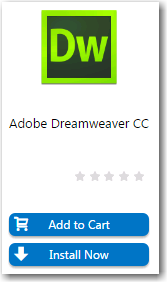Creating a Jamf Pro macOS (OS X) Desktop Application Catalog Item
When App Portal is connected to a Jamf Pro server, you can use the New Catalog Item Wizard to create a catalog item for an Apple maxOS desktop application. All macOS desktop applications configured on the connected Jamf Pro server can be associated with an App Portal catalog item and made available in App Portal.
Note:If a user does not have a registered Apple macOS desktop machine, that user will not see any macOS applications displayed on the Browse Catalog tab.
To create a Jamf Pro macOS desktop application catalog item, perform the following steps.
To create a Jamf Pro macOS desktop application catalog item:
|
2.
|
Under Catalog Management, select New Catalog Item Wizard. The Catalog Item Type panel of the New Catalog Item Wizard opens. |
|
3.
|
Select Software Catalog Item and click Next. The Software Source panel opens. |
|
4.
|
Select Jamf Pro Package and click Next. The Jamf Pro Packages panel opens, listing all of the macOS applications on the Jamf Pro server. |
|
5.
|
Select the macOS application that you want to associate with this new catalog item. |
|
6.
|
Click Next. The Catalog Item Title and Category panel opens. |
|
7.
|
In the Title field, enter a title to identify this catalog item in your App Portal storefront. By default, the name of the package or application that you selected is listed in this field. |
|
8.
|
From the Category field, select a category to specify this catalog item’s location in the App Portal catalog. You are required to select at least one category, but you may select more than one. |
|
9.
|
In the Brief Description field, enter the text that you want to display under the catalog item Title in the App Portal storefront (when viewed in list view). |
|
10.
|
By default, a generic icon is associated with this catalog item. To associate a custom icon to this catalog item, click Change to open the Image Selection dialog box and select a .gif, .jpg, or .png icon file. |
Tip:For best results, the uploaded image should be 80 px by 80 px or larger.
|
11.
|
In the Search Keywords text box, enter single words that an end user might enter when searching for this catalog item. |
|
12.
|
In the Full Description text area, enter a longer description of this catalog item, and use the items on the toolbar to format it. |
The text entered in the Title, Brief Description, and Full Description fields will be displayed as follows:
|
•
|
Title—The text entered in the Title field along with the catalog item icon, will be displayed when viewing this catalog item on the Browse Catalog tab. |

|
•
|
Brief Description—When viewing catalog items in list view, the brief description will also be visible: |

|
•
|
Full Description—The text entered in the Full Description field will be displayed when a catalog item is viewed in its detail view, which is opened by clicking on the catalog item name in either the list or card view. |

|
13.
|
When you are finished editing the fields on the Catalog Item Title and Category panel, click Next. If you are connected to FlexNet Manager Suite via the Flexera Service Gateway, the Flexera ID panel opens. |
|
14.
|
To track licenses for this catalog item using its Flexera ID, use the column filters to locate this application or package in FlexNet Manager Suite, select it, and click Next. The Jamf Pro Package Deployment Settings panel opens. |
|
15.
|
If you want this App Portal catalog item to support uninstallation of the application, select the Create Uninstall Policy option. If this option is selected, two policies will be created in Jamf Pro: one for installation and one for uninstallation. |
|
16.
|
Select a Jamf Pro distribution point for this package from the Select Distribution point list. Distribution points are servers used to host files for distribution to computers. |
|
17.
|
Click Next. The Ready to Create panel opens. |
|
18.
|
If, after this catalog item is created, you want to immediately open this catalog item’s Catalog Item Properties dialog box, where you can specify advanced settings, select the Load advanced view after creating the catalog item option. |
|
19.
|
Review the summary information and then click Create to create this new catalog item. The catalog item will now be listed on the Browse Catalog tab in the category you selected. |
Note:After creating a catalog item, you can edit its basic and advanced settings on the Catalog Item Properties dialog box, as described in Setting Catalog Item Properties.
Enabling the “Create Uninstall Policy” Option for a Jamf Pro Package
App Portal allows the uninstallation policy to be created for a Jamf Pro package only if the Allow package to be uninstalled option has been selected on the Options tab when editing package properties within Jamf Pro Management settings (Management Settings > Computer Management > Packages).
When this option is not selected, App Portal disables the Create Uninstall Policy option on the Jamf Pro Package Deployment Settings panel of the New Catalog Item Wizard (and the Deployment > Jamf Pro tab of the Catalog Item Properties dialog box).
When the Create Uninstall Policy option is selected, App Portal creates both an Install and Uninstall policy. Therefore, unless you select the Create Uninstall Policy option for a Jamf Pro package, users will not be able to request this package in the App Portal storefront.
See Also
New Catalog Item Wizard
Catalog Item Properties Dialog Box


